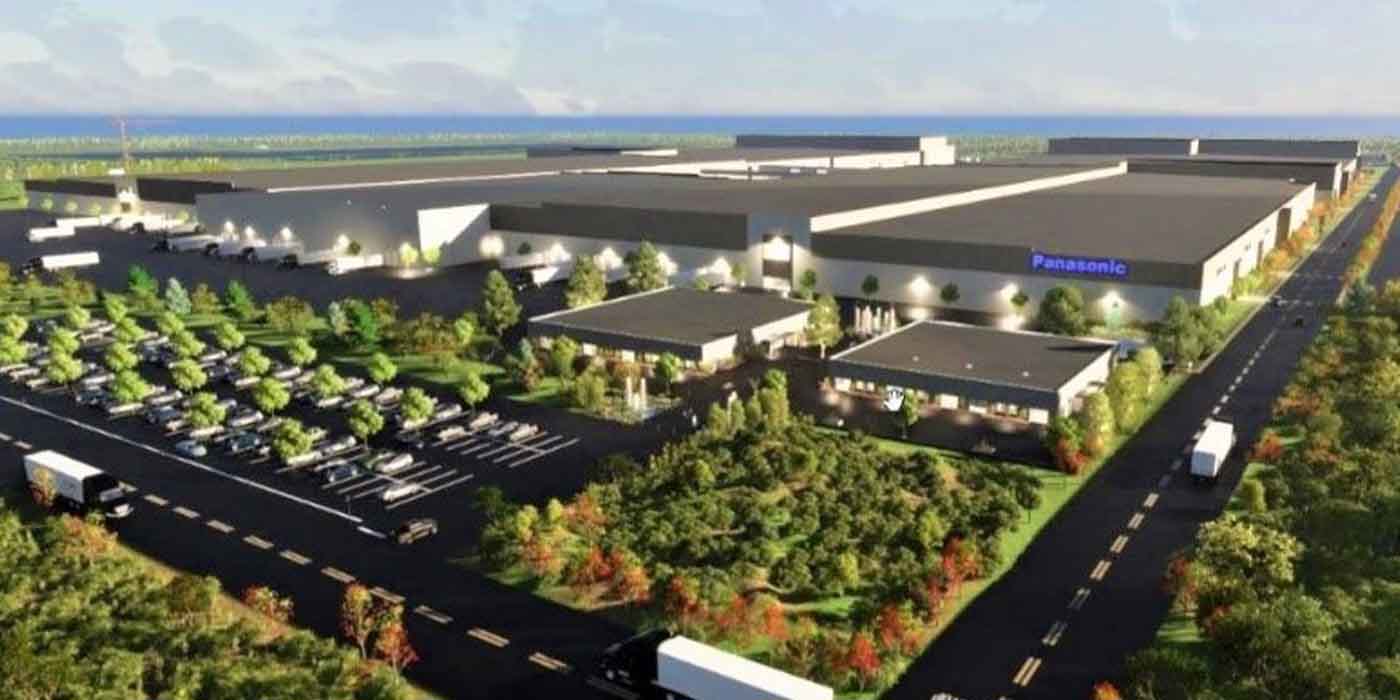
Tesla battery supplier Panasonic Energy is considering pouring new investments potentially up to $4 billion in its De Soto, Kansas, plant to produce 4680 battery cells for the Tesla Cybertruck and Tesla’s next-gen vehicles.
Sources with “direct knowledge of the matter” told Nikkei Asia that the Japanese EV battery maker is considering adding production capacity beyond what is already planned for its new plant.
The plan, dubbed internally as Phase 3, includes building additional production lines at the plant, already costing Panasonic $4 billion, currently under construction. Tesla, its main customer, jointly owns a factory with Panasonic in Nevada.
“No final decision has been made,” the source said, adding that “multiple factors” need to be considered before a decision is made. But the source did say that Panasonic is eyeing new capacity to make a larger, more voluminous 4680 battery, a cylindrical lithium-ion battery boasting an energy capacity five times greater than 2170 batteries.
Tesla and South Korea’s LG Energy Solution are developing 4680 batteries, but Panasonic claims it leads the charge in the technology at this stage.
A decision on the plan is expected to come at the end of the year, as the battery maker is still evaluating the production efficiency of the 4680, which it is testing at its factory in Wakayama, Japan.
Panasonic already plans to build 2170-type cells for EVs in De Soto, its second plant in North America. In 2022, it was expected that the factory would be designated for 4680-type cylindrical battery cells for Tesla’s next-gen models, but Panasonic delayed that project.
Back in January, Panasonic said that the Kansas plant will take its annual battery capacity to 88 GWh a year, with plans to raise that to 200 GWh by early 2031.
Panasonic CTO Shoichiro Watanabe recently told Bloomberg in an interview that the company will deliver on its promise to “quadruple production capacity by the 2030 fiscal year.” And to make that happen, he said the company won’t need to rely on building new factories or pouring large investments into production plans. Rather, “we will expand battery capacity and improve productivity at the same time,” Watanabe said.
Panasonic, whose main US customer is Tesla, produces some 10% of the batteries found in electric vehicles around the world. The company plans to start producing a revised version of its 2170-type cylindrical battery cells, which Tesla uses in its Model 3 and Model Y cars, and increase its battery production output by 10%. Panasonic has also been working to increase the energy density of the 2170 cell, with the company saying that the new improvements could help reduce the overall cost of an EV.
However, the Wall Street Journal reported recently that Panasonic had already spent a large portion of its investment on the plant due to rising construction costs in the US.
Mitsutaka Fujita, a researcher at Techno Systems Research, told Nikkei Asia that Panasonic’s plan reflects Tesla’s “steady demand,” adding “that Tesla “is making a decent profit, even after its price cuts,” especially compared to legacy automakers, which are leaning on hybrids and ICE to make up for “losses in their EV business,” the report said.
Fujita also added that Tesla “desperately” wants more 4680 batteries, presumably for its Cybertruck, Semi truck, and Roadster, the report said, and that the automaker’s own battery production isn’t going as smoothly as planned.
Other automakers are using large-volume cylindrical cells with a diameter of 46 mm, but they use a different format. BMW is also using cylindrical cells with a diameter of more than 80mm in its upcoming Neue Klasse vehicles.
FTC: We use income earning auto affiliate links. More.


Comments